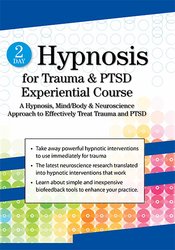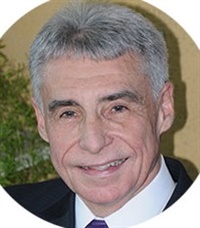

Your clients have endured stressful and traumatic experiences which often results in less ability to maintain health and to fully provide self-comfort. This course is designed to help you understand more the neurological and psychological patterns that create PSTD symptoms. This course will focus on developing strategies to help traumatized clients heal by changing these patterns.
Hypnosis is a powerful tool that you can add to your clinical toolbox for treating trauma. When it’s used with the brain in mind, hypnosis provides effective interventions to help clients interrupt negative patterns, live more in joy with the ability to self-motivate, and accomplish life goals.
During this course, special emphasis will be given to understanding how trauma affects the brain and can lead to symptoms such as anxiety, depression, panic, insomnia, obsessive-compulsive behaviour and difficulty handling anger. You will learn how to treat these symptoms with the use of hypnosis.
Watch hypnosis experts and trainers, Carol Kershaw and Bill Wade, as they demystify and simplify hypnosis so you can start using it with your traumatized clients immediately. They will break down the research that supports hypnosis for trauma and teach you how to implement it into your clinical work. You will learn through demonstration, case- examples, lecture, experiential exercises and hands-on experience.
This is a course you don’t want to miss!
PESI Australia, in collaboration with PESI in the USA, offers quality online continuing professional development events from the leaders in the field at a standard recognized by professional associations including psychology, social work, occupational therapy, alcohol and drug professionals, counselling and psychotherapy. On completion of the training, a Professional Development Certificate is issued after the individual has answered and submitted a quiz and course evaluation. This program is worth 12.0 hours CPD for points calculation by your association.
| File type | File name | Number of pages | |
|---|---|---|---|
| Manual 053195 (3.3 MB) | 65 Pages | Available after Purchase |

Bill Wade, MDiv, LPC, LMFT, is a licensed professional counselor and marriage and family therapist, author and international trainer. Co-director of the Milton Erickson Institute of Houston he is also a co-author of Brain Change Therapy: Clinical Interventions for Self-Transformation and The Worry-Free Mind: Train Your Brain, Calm The Stress Spin Cycle, and Discover a Happier, More Productive You. Bill has taught extensively in the states on neuroscience and has also taught meditation and given Dharma lectures at various Buddhist temples.
Speaker Disclosures:
|
2-Day Hypnosis for Trauma & PTSD: A Hypnosis, Mind/Body & Neuroscience Approach to Effectively Treat Trauma and PTSD
Copyright: 28/10/2021 - Product Code POS053195 |
Please wait ...